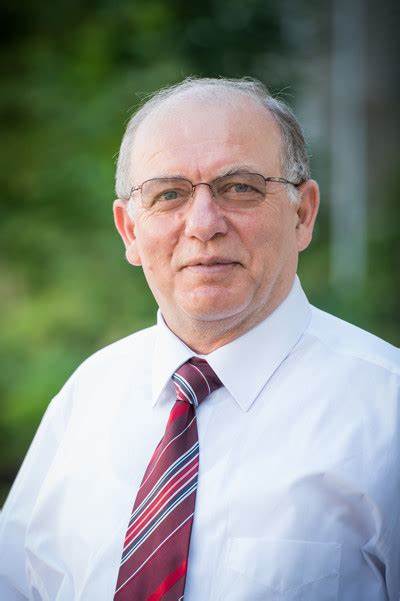
Upcoming Lectures

Upcoming Lectures
Lecture 2 Digital Machining
数字加工
日期: 2022-04-27 点击:
Speaker Bio

Professor Yusuf Altintas is the fellow of Royal Society of Canada, National Academy of Engineering (USA), CIRP, ASME, SME, ACATECH, CAE, EC, Tokyo University, P&WC, AvH and ISNM. He received Pratt & Whitney Canada’s (P&WC) university partnership (1997), APEG BC’s Meritorious Achievement (2002), APEG BC R.H. McLachlan (2010), UBC Killam Teaching Prize of Engineering (2011), Gold Medal of Engineers Canada (2011), SME Albert M. Sergent Progress Award (2012), NSERC Synergy Award, ASME Blackall Machine Tool and Gage best journal paper award, the special scientific award of Republic of Turkey in Science and Engineering (2013), Georg Schlesinger Production Engineering Award (Berlin, 2016), and ASME William T. Ennor Manufacturing Technology Award (USA, 2016). He holds an Honorary Doctorate Degrees from Stuttgart University (2009) and Budapest University of Technology (2013), and holds Honorary Professor title from BEIHANG University in Beijing. He was the past president of CIRP (International Academy of Production Engineering Researchers) for term 2016 – 2017. He is designated as the Distinguished University Scholar at the University of British Columbia (2017).
He currently directs NSERC CANRIMT Machining Research Network across Canada, and holds the NSERC – P&WC- Sandvik Coromant Industrial Research Chair Professorship to develop next generation Digital Machining Twin Technology. He is also founding president of MAL Manufacturing Automation Lab. Inc. (www.malinc.com) which develops virtual machining technology.
Yusuf Altintas教授是加拿大皇家学会会士、美国国家工程院院士、CIRP、ASME、SME、ACATECH、CAE、EC、东京大学、P&WC、AvH和ISNM的研究员。他获得了普惠加拿大(P&WC)大学合作伙伴(1997),APEG BC 's Meritorious Achievement (2002),APEG BC R.H. McLachlan(2010),UBC Killam工程教学奖(2011),加拿大工程师金奖(2011),中小企业Albert M. Sergent进步奖(2012),NSERC协同奖,ASME Blackall Machine Tool and Gage最佳期刊论文奖,土耳其共和国科学与工程特别奖(2013),Georg Schlesinger生产工程奖(柏林,2016),ASME William T. Ennor制造技术奖(美国,2016)。拥有斯图加特大学(2009年)和布达佩斯工业大学(2013年)的荣誉博士学位,并拥有北京航空航天大学的荣誉教授头衔。曾任2016 - 2017年度国际生产工程研究院院长,被任命为英属哥伦比亚大学杰出学者(2017年)。
目前领导着加拿大国家机械工程研究委员会CANRIMT加工研究网络,并拥有国家机械工程研究委员会P&WC- Sandvik Coromant工业研究主席教授职位,以开发下一代数字加工孪生技术。他也是MAL制造自动化实验室的创始总裁,公司(www.malinc.com)开发虚拟加工技术。
Abstract
The aim of our research is to develop mathematical models of metal cutting operations, machine tool vibrations and control. The science based digital models allow the virtual design of machine tools; simulation, optimization and on-line monitoring of machining operations.
The model predicts the cutting forces, torque and power consumed in machining parts by considering material properties, cutter geometry, structural flexibilities, and cutting conditions along the tool path. The structural dynamics of the machine tool can either be imported from Finite Element analysis if the machine tool is at the design stage, or from the experimental modal measurements if the machine is already built. The simulation system predicts chatter free cutting conditions within the work volume of the machine tool, or detects the presence of chatter vibrations along the tool path. The dynamics of servo drive control systems, and trajectory generation as a function of jerk, acceleration and velocity profiles of machine tools are considered in simulating the machine tool behavior. An in-house developed virtual and real time CNC system allows the design and analysis of any five axis machine tool controller.
The virtual machining system simulates the cutting forces, torque, power, chip load and deflection errors along the tool path, and adjusts the federate along the tool path in CAM environment. The system is also used in on-line monitoring and control of machine tool and machining process by communicating with CNC in real time as a digital twin.
The presentation will cover the overview of basic research we conducted at our laboratory and its application in industry.
该研究的目的是建立金属切削操作、机床振动和控制的数学模型。基于科学的数字模型实现了机床的虚拟设计;加工操作的仿真、优化和在线监测。该模型通过考虑材料特性、刀具几何形状、结构灵活性和刀具路径上的切削条件来预测切削力、扭矩和切削功耗。机床的结构动力学既可以从有限元分析(如果机床处于设计阶段)导入,也可以从实验模态测量(如果机床已经建成)导入。该仿真系统可以预测机床工作体积内的自由切削颤振情况,或检测沿刀具路径存在的颤振振动。在机床行为模拟中,考虑了伺服驱动控制系统的动力学特性,以及机床的加速度、速度和加速度分布对轨迹生成的影响。一个内部开发的虚拟和实时数控系统允许设计和分析五轴机床控制器。
该虚拟加工系统在CAM环境下模拟切削力、扭矩、功率、切屑负载和偏转误差,并对工件沿刀具路径进行调整。该系统还可以作为数字孪生体与数控机床进行实时通信,用于机床和加工过程的在线监测和控制。
本报告将涵盖我们在实验室进行的基础研究及其在工业上的应用概况。


